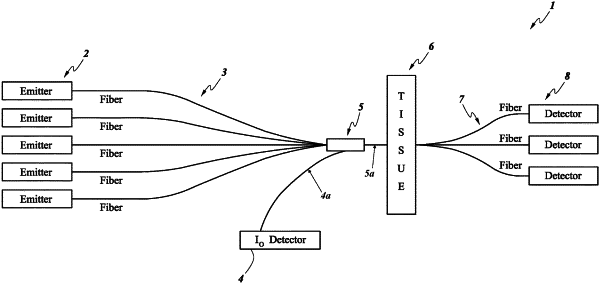| CPC A61B 5/1455 (2013.01) [A61B 5/6826 (2013.01); A61B 5/6838 (2013.01); A61B 2562/0242 (2013.01)] | 20 Claims |

|
1. A noninvasive physiological sensor comprising:
a first body portion and a second body portion coupled to the first body portion, the first and second body portions configured to at least partially enclose a finger of a user; and
a first probe and a second probe at least partially aligned with the first probe, the first probe coupled to one or more emitters and to at least one of the first and second body portions, the first probe configured to direct optical radiation emitted from the one or more emitters toward tissue of the user's finger, the second probe coupled to one or more detectors and to at least one of the first and second body portions, the second probe configured to direct light attenuated through pulsatile blood flowing through the tissue to the one or more detectors;
wherein, when the first and second body portions are rotated with respect to one another, a distance between ends of the first and second probes is changed.
|